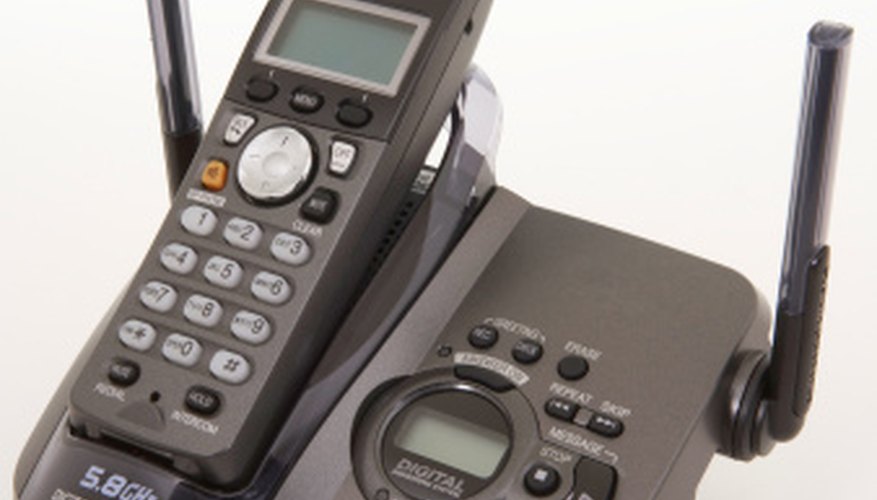The introduction of digital cordless phones improved sound quality over analogue and prevented eavesdropping that analogue cordless phones allowed. DECT (Digital Enhanced Cordless Telecommunications) phones take digital much further, as they add additional data to the communications between the phone and the base station, allowing many additional functions and more flexibility. For basic cordless phone use, DECT also allows access to a frequency band with less interference.
Basic Differences Between Digital and DECT
DECT 6.0, as it is called in the United States, provides a more secure digital protocol than regular digital phones, and adds features such as sharing a base station unit among several handsets, and letting the handsets communicate with each other. For small business systems, the handsets may also share several lines. These features are made possible by the more complex DECT digital protocol which carries the voice data.
Choosing Between Digital and DECT
For basic cordless phone use, DECT has several advantages over digital, even if the phone functionality is the same. DECT 6.0 operates on the 1.9 GHz band in the United States, which has less interference than the popular 2.4 GHz band. The 2.4 GHz band is shared between a wide variety of devices including Wi-Fi wireless Internet, baby monitors and even microwave ovens. DECT phones are also designed to transmit higher quality digital sound.
- For basic cordless phone use, DECT has several advantages over digital, even if the phone functionality is the same.
DECT Technology in Large Phone Systems
Larger DECT-based phone systems have been popular in Europe for years, and DECT has also been used as a limited range mobile phone type service in some countries rather than wiring every household. DECT-based networks can be extended and distributed in addition to functioning as a basic point-to-point cordless phone device. Larger companies can implement DECT systems with hundreds of handsets and wireless repeaters, allowing access throughout a building. DECT protocols provide standards for voice and data transport, allowing many functions similar to mobile phones.
- Larger DECT-based phone systems have been popular in Europe for years, and DECT has also been used as a limited range mobile phone type service in some countries rather than wiring every household.
- DECT-based networks can be extended and distributed in addition to functioning as a basic point-to-point cordless phone device.
DECT Future Possibilities
If DECT 6.0 becomes popular in the United States as it has in Europe, corporate and residential telephone systems could become wireless. Instead of providing digital cordless phones, which respond only to an associated base station wired to a standard telephone jack, DECT phones connect wirelessly without a need for physical installation. Integrated voice and data devices for applications such as hospital communication are also possible with DECT, which can be used for a variety of data-only wireless devices in addition to voice communications.
